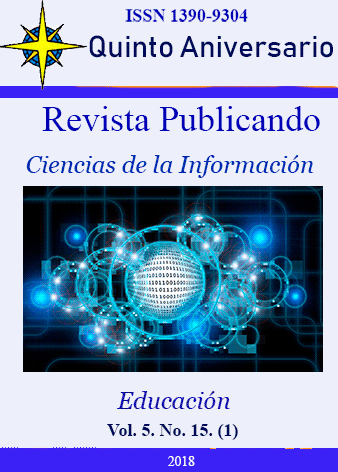Resumen
With the development of new technologies and electronic devices, one of the main topic of special concern is the aspect of power quality, amongst which control and prediction of harmonics are of utmost importance. The presence of harmonics caused by nonlinear loads which are common in Industrial plants and large scale office buildings means a threat to the sensitive equipments like that of computers, adjustable speed drives, power electronics load etc. Harmonic pollution causes electrical noises, sensitive equipment malfunctioning, tripping of circuit breakers, accelerated ageing of equipments, excessive temperature rises in motors which ensures the importance of harmonic mitigation in power system, also its mitigation is important in order to avoid the fines & costs associated with the poor power quality they are responsible for. The proposed technique discussed in this paper uses P,Q theory and PI controller to mitigate the Grid connected Solar DG unit harmonics with closed loop power control. It is a current controlled technique basically an Active Harmonic Filtering Technique. The proposed DG unit also achieves Zero Steady state tracking error. Simulated results in MATLAB validates the correctness of this method.
Referencias
IEEE Standard 1159-1995, IEEE recommended practice for monitoring electric power quality, 1995.
P. Rodr ´Ä±guez, A. Luna, I. Candlea, R. Mujal, R. Teodorescu, and F. Blaabjerg, “Multiresonant frequency-locked loop for grid synchronization of power converters under distorted grid conditions,” IEEE Trans. Ind. Electron., vol. 58, no. 1, pp. 127–138, Jan. 2011.
T.-L. Lee and P.-T. Cheng, “Design of a new cooperative harmonic filtering strategy for distributed generation interface converters in an islanding network,” IEEE Trans. Power Electron., vol. 22, no. 5, pp. 1919 1927, Sep. 2007.
X. Sun, J. Zeng, and Z. Chen, “Site selection strategy of single frequency tuned R-APF for background
harmonic voltage damping in power systems,” IEEE Trans. Power Electron., vol. 28, no. 1, pp. 135–143, Jan. 2013.
Kermani, B., Xiao, M., Stoffels, S. M., and Qiu, T. (2018). “Reduction of subgrade fines migration into subbase of flexible pavement using geotextile.” Geotextiles and Geomembranes, vol. 46, issue 4), pp. 377-383.
J. He, Y. W. Li, and S. Munir, “A flexible harmonic control approach Through voltage controlled DG-Grid interfacing converters,” IEEE Trans. Ind. Electron., vol. 59, no. 1, pp. 444–455, Jan. 2012.
C. Lascu, L. Asiminoaei, I. Boldea, and F. Blaabjerg, “High performance current controller for selective harmonic compensation in active power filters,” IEEE Trans. Power Electron, vol. 22, no. 5, pp. 1826–1835, May 2007.
Jinwei He, YunWei Li, FredeBlaabjerg, and Xiongfei Wang, “Active Harmonic Filtering Using Current-Controlled,Grid-Connected DG Units With Closed-LoopPower Control,” IEEE Trans. Power Electron, vol. 29, no. 2, pp 642-653, Feb 2014.
C. Lascu, L. Asiminoaei, I. Boldea, and F. Blaabjerg, “Frequency response analysis of current controllers for selective harmonic compensation inactive power filters,” IEEE Trans. Power Electron, vol. 56, no. 2, pp. 337– 347, Feb. 2009.
H. Akagi, “Control strategy and site selection of a shunt active filterfor damping of harmonic propagation in power distribution systems,” IEEE Trans. Power Deliv., vol. 12, no. 1, pp. 354–363, Jan. 1997.
H. Akagi, H. Fujita, and K. Wada, “A shunt active filter based onvoltage detection for harmonic termination of a radial powerdistribution line,” IEEE Trans. Ind. Appl., vol. 35, no. 3, pp. 638–645, May/Jun. 1999.
R. I. Bojoi, L. R. Limongi, D. Roiu, and A. Tenconi, “Enhanced power quality control strategy for single-phase inverters in distributed generation systems,” IEEE Trans. Power Electron., vol. 26, no. 3, pp. 798–806, Mar. 2011.
Kermani, B., Xiao, M., Stoffels, S. M., and Qiu, T. (2017). "Measuring the migration of subgrade fine particles into subbase using scaled accelerated flexible pavement testing–a laboratory study." Road Materials and Pavement Design, 1-22. DOI: 10.1080/14680629.2017.1374995.
Timbus, M. Liserre, R. Teodorescu, P. Rodriguez, and F. Blaabjerg, “Evaluation of current controllers for distributed power generation systems,” IEEE Trans. Power Electron., vol. 24, no. 3, pp. 654–664, Mar. 2009.
M. Castilla, J. Miret, J. Matas, L. G. de VicuËœna, and J. M. Guerrero, “Linear current control scheme with series resonant harmonic compensator
for single-phase grid-connected photovoltaic inverters,” IEEE Trans. Ind. Electron., vol. 55, no. 7, pp. 2724–2733, Jul. 2008.
H. Akagi, E. H. Watanabe, and M. Aredes, Instantaneous Power Theory and Applications to Power Conditioning. Hoboken, NJ: Wiley-IEEE Press, Feb. 2007, pp. 74–79.
Asha Gaikwad, GundharChougule, “software & hardware implementation of Quasi Z source inverter in DC-DC converter with DC motor as load”, Journal of power electronics & power system, Vol 5,Issue 3,Pg No 97-107,2015.
Shafieardekani, M., and Hatami, M. (2013). “Forecasting Land Use Change in suburb by using Time series and Spatial Approach; Evidence from Intermediate Cities of Iran.” European Journal of Scientific Research, 116(2), 199-208.
Usted es libre de:
Compartir — copiar y redistribuir el material en cualquier medio o formato
Adaptar — remezclar, transformar y construir a partir del material
La licenciante no puede revocar estas libertades en tanto usted siga los términos de la licencia
Bajo los siguientes términos:
Atribución — Usted debe dar crédito de manera adecuada, brindar un enlace a la licencia, e indicar si se han realizado cambios. Puede hacerlo en cualquier forma razonable, pero no de forma tal que sugiera que usted o su uso tienen el apoyo de la licenciante.
NoComercial — Usted no puede hacer uso del material con propósitos comerciales.
CompartirIgual — Si remezcla, transforma o crea a partir del material, debe distribuir su contribución bajo la lamisma licencia del original.
